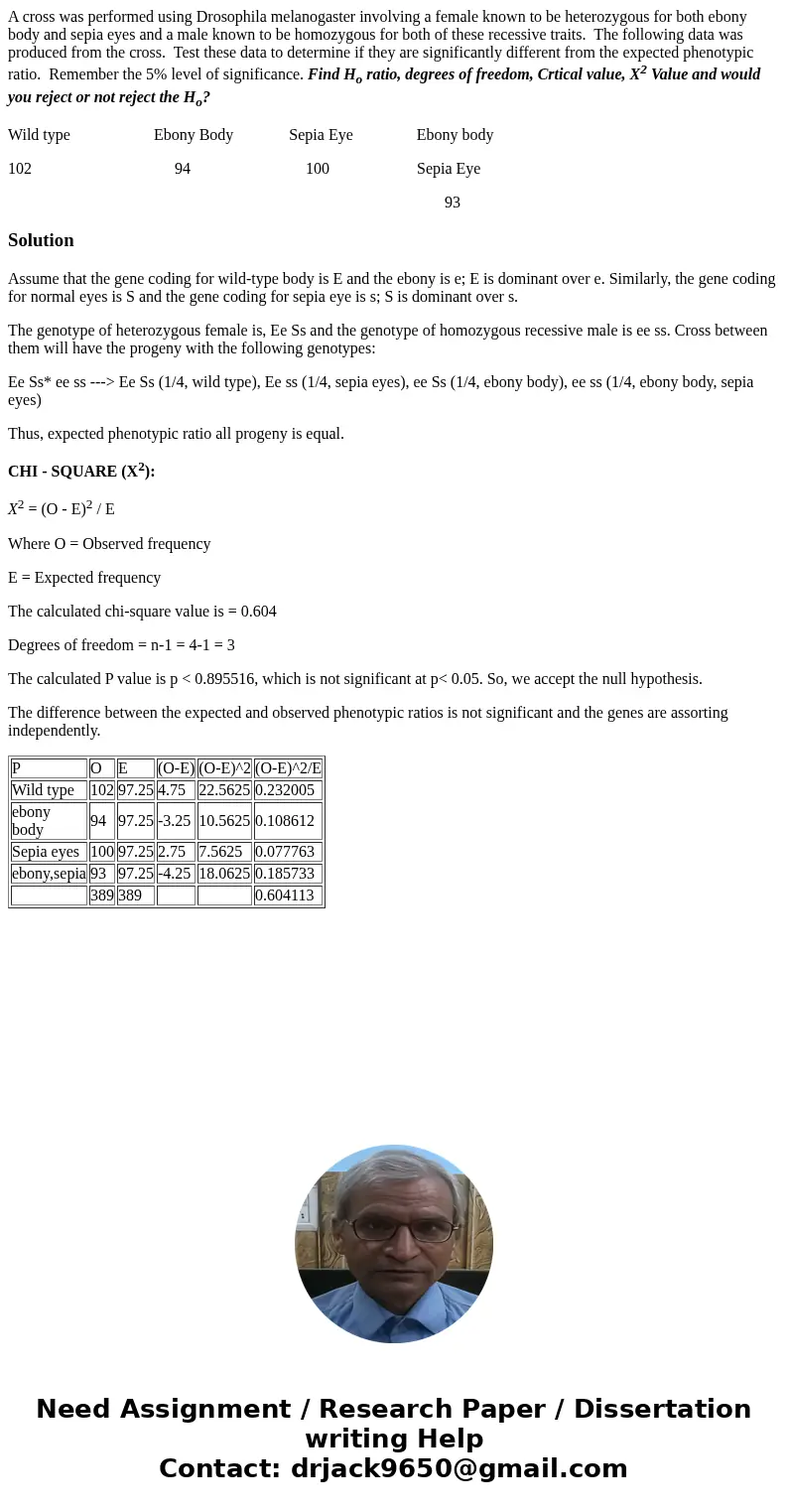A cross was performed using Drosophila melanogaster involvin
A cross was performed using Drosophila melanogaster involving a female known to be heterozygous for both ebony body and sepia eyes and a male known to be homozygous for both of these recessive traits. The following data was produced from the cross. Test these data to determine if they are significantly different from the expected phenotypic ratio. Remember the 5% level of significance. Find Ho ratio, degrees of freedom, Crtical value, X2 Value and would you reject or not reject the Ho?
Wild type Ebony Body Sepia Eye Ebony body
102 94 100 Sepia Eye
93
Solution
Assume that the gene coding for wild-type body is E and the ebony is e; E is dominant over e. Similarly, the gene coding for normal eyes is S and the gene coding for sepia eye is s; S is dominant over s.
The genotype of heterozygous female is, Ee Ss and the genotype of homozygous recessive male is ee ss. Cross between them will have the progeny with the following genotypes:
Ee Ss* ee ss ---> Ee Ss (1/4, wild type), Ee ss (1/4, sepia eyes), ee Ss (1/4, ebony body), ee ss (1/4, ebony body, sepia eyes)
Thus, expected phenotypic ratio all progeny is equal.
CHI - SQUARE (X2):
X2 = (O - E)2 / E
Where O = Observed frequency
E = Expected frequency
The calculated chi-square value is = 0.604
Degrees of freedom = n-1 = 4-1 = 3
The calculated P value is p < 0.895516, which is not significant at p< 0.05. So, we accept the null hypothesis.
The difference between the expected and observed phenotypic ratios is not significant and the genes are assorting independently.
| P | O | E | (O-E) | (O-E)^2 | (O-E)^2/E |
| Wild type | 102 | 97.25 | 4.75 | 22.5625 | 0.232005 |
| ebony body | 94 | 97.25 | -3.25 | 10.5625 | 0.108612 |
| Sepia eyes | 100 | 97.25 | 2.75 | 7.5625 | 0.077763 |
| ebony,sepia | 93 | 97.25 | -4.25 | 18.0625 | 0.185733 |
| 389 | 389 | 0.604113 |

 Homework Sourse
Homework Sourse